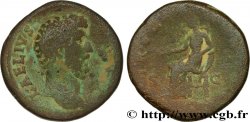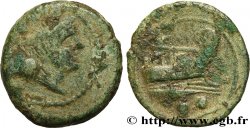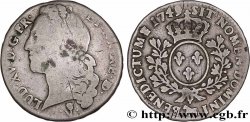v57_0273 - AELIO Diobole
MONNAIES 57 (2013)
Prezzo di inizio : 225.00 €
Valutazione : 350.00 €
Prezzo realizzato : 265.00 €
Numero di offerte : 2
Offerta maxima : 510.00 €
Prezzo di inizio : 225.00 €
Valutazione : 350.00 €
Prezzo realizzato : 265.00 €
Numero di offerte : 2
Offerta maxima : 510.00 €
Tipo : Diobole
Data: 137
Nome della officina / città: Alexandrie, Égypte
Metallo : rame
Diametro : 23 mm
Asse di coniazione : 12 h.
Peso : 7,24 g.
Grado di rarità : R2
Commenti sullo stato di conservazione:
Exemplaire sur un flan ovale et irrégulier, bien centré des deux côtés. Beau portrait d’Aélius. Revers énigmatique bien venu à la frappe. Belle patine verte et sable
Diritto
Descrittivo diritto : Buste drapé, tête nue à droite, vu de trois quarts en arrière (A°2).
Legenda diritto : L AILIOS KAISAR, (Lukios Ailios Kaisar)
Traduzione diritto : (Lucius Aelius césar).
Rovescio
Descrittivo rovescio : Homonoia (Concordia) la Concorde drapée, debout à gauche, tenant une patère de la main droite et deux épis de la main gauche.
Legenda rovescio : DHM EX O-US UPAT B, (Dhmos Exous Upatos B)
Traduzione rovescio : (le Peuple, saint deuxième consulat).
Commento
Dans tous les ouvrages, le revers est décrit comme Homonoia car il est ainsi nommé sur la drachme et l’hémidrachme, mais ici, l’entité, la déesse présente un petit croissant de chaque côté de la tête et doit plutôt être identifiée avec Déméter (Cérès) plutôt que comme Homonoia ou Concordia chez les Romains. C’est la première fois que nous proposons ce type à la vente qui semble beaucoup plus rare que ne le laissent supposer les ouvrages généraux.
In all the works, the reverse is described as Homonoia because it is so named on the drachma and the hemidrachma, but here, the entity, the goddess has a small crescent on each side of the head and should rather be identified with Demeter (Ceres) rather than as Homonoia or Concordia among the Romans. This is the first time that we offer this type for sale which seems much rarer than general works suggest
In all the works, the reverse is described as Homonoia because it is so named on the drachma and the hemidrachma, but here, the entity, the goddess has a small crescent on each side of the head and should rather be identified with Demeter (Ceres) rather than as Homonoia or Concordia among the Romans. This is the first time that we offer this type for sale which seems much rarer than general works suggest








 Segnalare un errore
Segnalare un errore Stampate la pagina
Stampate la pagina Condividi mia selezione
Condividi mia selezione Fai una domanda
Fai una domanda Consegnare / vendere
Consegnare / vendere
 Descrittivo
Descrittivo















